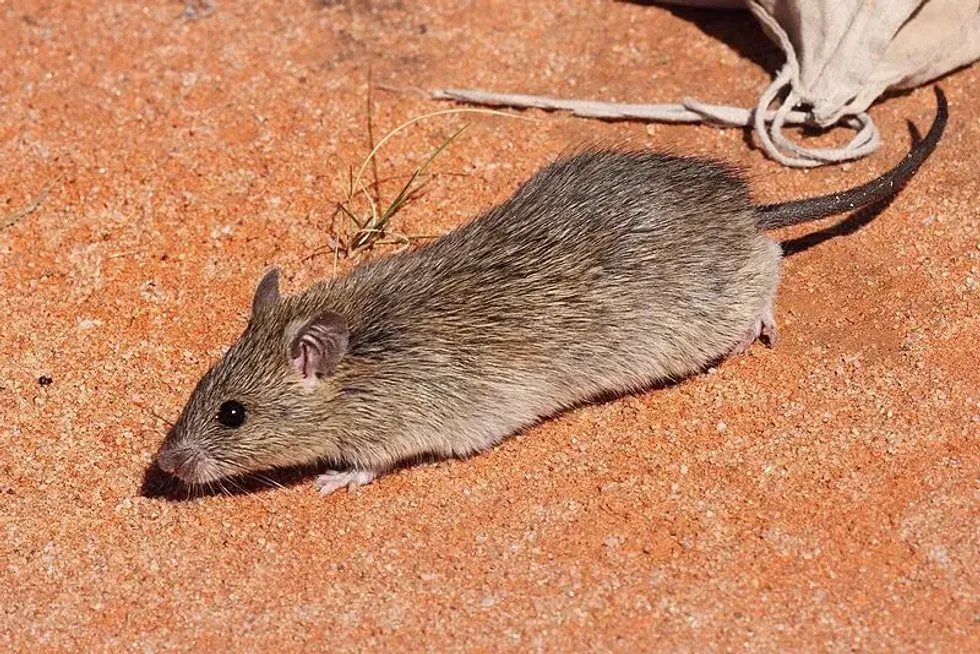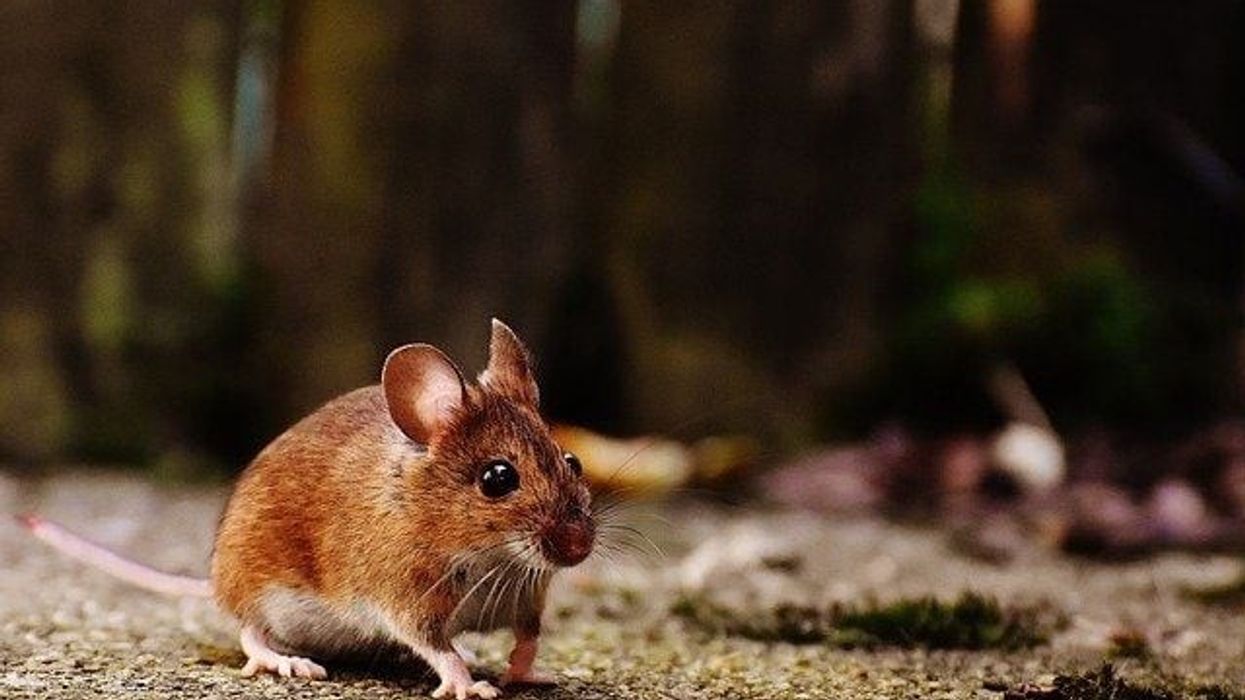What do you remember when you think about rats? I am sure we all remember the bubonic plague or the disease-carrying rodents. But did you know of a rat that does not smell, nor does it carry any diseases?
The long-haired rat is a species of rat that is native to Australia. One of their alternative names is the plague rat.
The lengthy hairs that protect its undercoat give it its name. The distribution of this species can be as far as 800 miles (1287 km)! And during the plague, when food is plentiful, the population is spread around vast areas quickly.
This Australian rat species of genus Rattus mainly survives on leaves, sunflowers, seeds, and more such vegetation. The species population oscillates as per the availability of food sources. Despite being a source of diet for animals like the kites, foxes, snakes, these Australian rodent species have managed to be of Least Concern for their conservation status!
For more relatable content, check out these mongoose facts and black rat facts for kids.
Long-Haired Rat Interesting Facts
What type of animal is a long-haired rat?
A long-haired rat (Rattus villosissimus) is a kind of rat. It is one 60 plus known species of rat rodents.
What class of animal does a long-haired rat belong to?
The long-haired rat (Rattus villosissimus) belongs to the class Mammalia.
How many long-haired rats are there in the world?
After lots of rain and an abundance of food, these rodents (Rattus villosissimus) are said to have a distribution of up to 130,000 sq km across Queensland, Australia. Though the exact population is not known, they have a wildly fluctuating population. They breed excessively during the availability of food resources, while they die very rapidly when vegetation is scarce.
Where does a long-haired rat live?
The Australian rodent can be found in vast areas, including the desert, on a farm, or even in a house! They are found across New South Wales, Queensland, Western Australia, and the majority of the Northern Territory and South Australia
What is a long-haired rat's habitat?
Long-haired rat prefers to live in a burrow low in the ground or seek shelter in a structure with dense vegetation. They spend most of their time in burrows, but they keep close to foliage for protection from predators. They are mostly found in sub-tropical or temperate regions.
Who do long-haired rats live with?
Rats are social animals and hence live in packs. It is said that being alone might make them depressed.
How long does a long-haired rat live?
The lifespan of a long-haired rat (Rattus villosissimus) is not available, but in the wildlife, a rat lives an average lifespan of 12 months. But as pets, they can live up to two or three years.
How do they reproduce?
Breeding can occur in long-haired rat species at any time of the year, especially when plentiful food resources are available. A young Long-haired rat reaches sexual maturity at 70 days old. They usually produce up to 10 offspring, but they can produce around 12 baby rats every 12 weeks! Their pregnancy period lasts around 21-23 days.
What is their conservation status?
The long-haired rat populations tell us that they are not under any threat of extinction. Hence their conservation status is Least Concern according to the IUCN (International Union for Conservation of Nature).
Long-Haired Rat Fun Facts
What do long-haired rats look like?

*Please note, this is an image of a brown rat, a relative of the long-haired rat, if you have an image of a long-haired rat, please email us at hello@kidadl.com.
Long-haired rats are most active during nighttime, and their activities are guided by moonlight. They are subject to be studied more during the plague seasons. Their biology during other times is not very well known.
But, their basic biology can be seen as they are gray-brownish and have long and coarse hair. These hairs protect their soft undercoat. It also gives the appearance of grey speckles in brown fur.
This is their distinguishing feature from other rats. They have a tail of around 4.4 -6 in (11.1 - 15.2 cm). The average length of this rodent is 7.48 in (18.9 cm).
How cute are they?
Long-haired rats (Rattus villosissimus) look adorable with their fluffy hair! They are also very intelligent and highly social animals which adds to their charisma.
How do they communicate?
Usually, when we think of rats making noises, it's just a squeak here and there. Other than that, we might consider them as quiet animals.
But here's a fun fact, rats communicate by making varied meaningful noises of ultrasound frequencies! The long-haired rat has excellent hearing skills and communicates in a frequency that is not even audible to human ears!
How big is a long-haired rat?
A long-haired rat (Rattus villosissimus) species of family Muridae ranges between 6.5 - 7.5 in (16.5-19.05 cm) with an average length of 48 in (121.9 cm). This makes the long-haired rat more than three times bigger than a dwarf hamster!
How fast can a long-haired rat run?
The long-haired rat (Rattus villosissimus), of the family Muridae, is a very fast rodent. On average, this large rat species can run up to 8 mph (14kph).
How much does a long-haired rat weigh?
A long-haired rat (Rattus villosissimus) is a rodent that weighs around the range of 0.24-0.34 lb (112-156 g ).
What are the male and female names of the species?
A male long-haired rat is known as a buck, and a female long-haired rat is known as a doe. In a group, the long-haired rat is referred to as a plague, a swarm, or a horde.
What would you call a baby long-haired rat?
The young one of a long-haired rat is known as a pup, nestling, or even a pinkie!
What do they eat?
Long-haired rats of the Muridae family are essentially herbivores, but also can be carnivores at times. Their diet includes roots, leaves, stems, seeds, sunflowers, etc. Though sometimes the rat also eats small insects such as locusts.
Are they dangerous?
These rats are not dangerous, but they might bite humans who seem like a threat to them or gnaw through various areas.
Would they make a good pet?
Well, the little long-haired rat may not make the best pets. This native rat is found in Australia and won't be as easy to find anywhere else. Also, being a nocturnal rodent, the long-haired rat won't be active during the day. Hence, making it difficult to spend some quality time with your pet rat.
Did you know...
The remarkable and cool fact about the little rat is that they can fall from 50 ft (15.24 m) and won't even get a scratch on their body!
What is unique about the long-haired rat?
A unique and less known feature of the long-haired rat is that, unlike many other rats, this rat does not smell; in fact, the long-haired rat in Australia does not carry any diseases.
Are long-haired rats endangered?
Long-haired rats, native to Australia, are not an endangered species, despite the fact that they are a staple diet of letter-winged kites and are also preyed upon by barn owls. Well, though, the population of the long-haired rat fluctuates according to the availability of food in their habitat.
Here at Kidadl, we have carefully created lots of interesting family-friendly animal facts for everyone to discover! Learn more about some other arthropods from our nutria facts and naked mole rat facts pages.
You can even occupy yourself at home by coloring in one of our free printable Long haired rat coloring pages.









